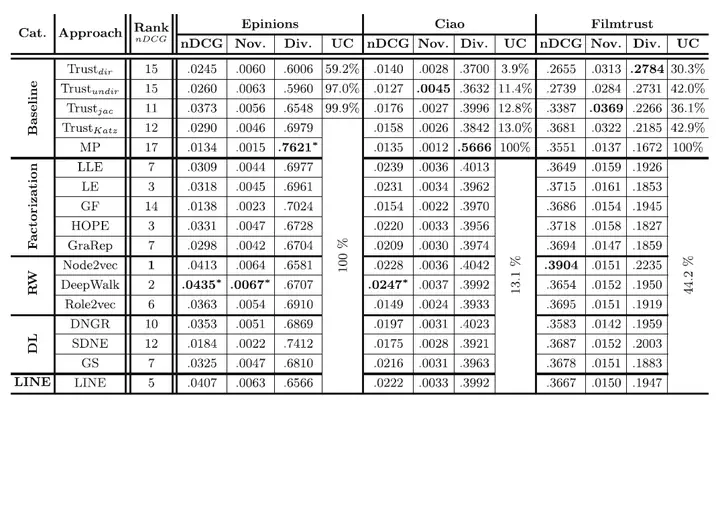Empirical Comparison of Graph Embeddings for Trust-Based Collaborative Filtering
 Trust-based collaborative filtering performance for cold-start users across five algorithm families on three datasets, measuring recommendation quality (nDCG), novelty, diversity, and user coverage. Asterisks indicate statistically significant superior performance. Random walk-based approaches consistently delivered the best accuracy with high novelty and diversity.
Trust-based collaborative filtering performance for cold-start users across five algorithm families on three datasets, measuring recommendation quality (nDCG), novelty, diversity, and user coverage. Asterisks indicate statistically significant superior performance. Random walk-based approaches consistently delivered the best accuracy with high novelty and diversity.
Abstract
In this work, we study the utility of graph embeddings to generate latent user representations for trust-based collaborative filtering. In a cold-start setting, on three publicly available datasets, we evaluate approaches from four method families - (i) factorization-based, (ii) random walk-based, (iii) deep learning-based, and (iv) the Large-scale Information Network Embedding (LINE) approach. We find that across the four families, random-walk-based approaches consistently achieve the best accuracy. Besides, they result in highly novel and diverse recommendations. Furthermore, our results show that the use of graph embeddings in trust-based collaborative filtering significantly improves user coverage.
Type
Publication
Proceedings of the 25th International Symposium on Methodologies for Intelligent Systems